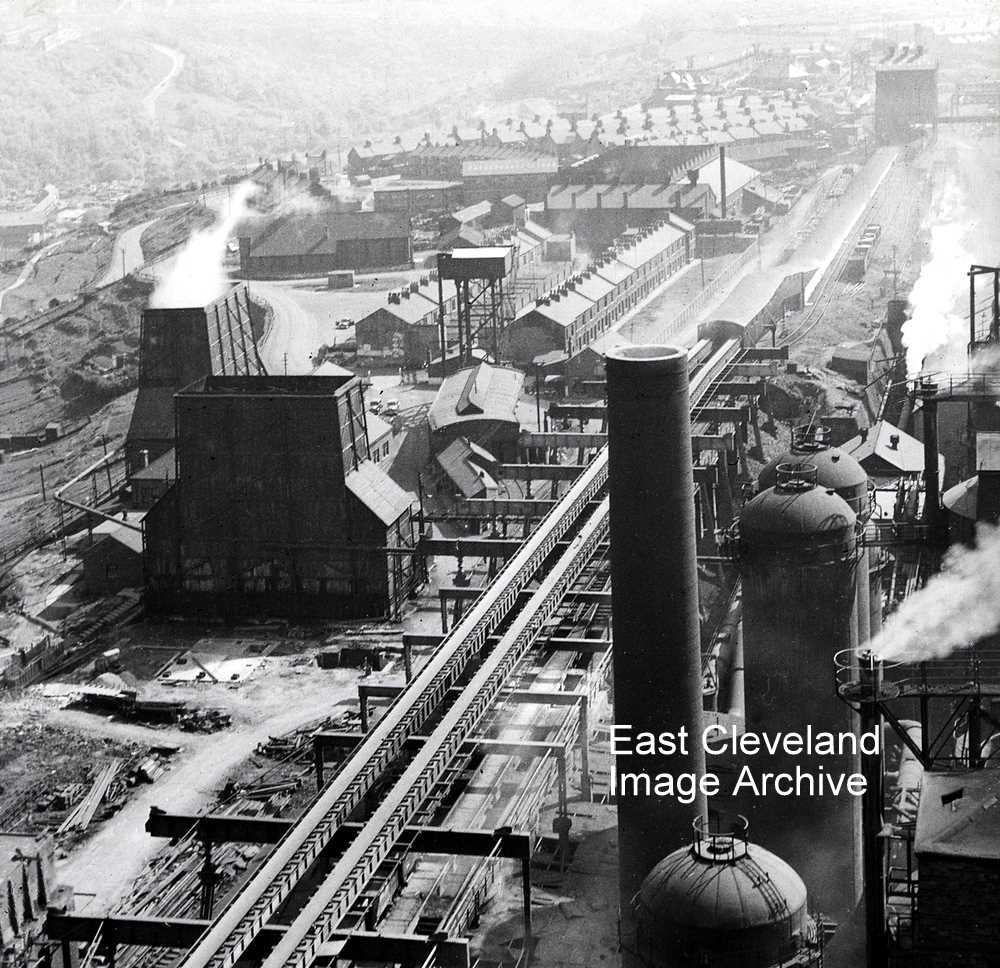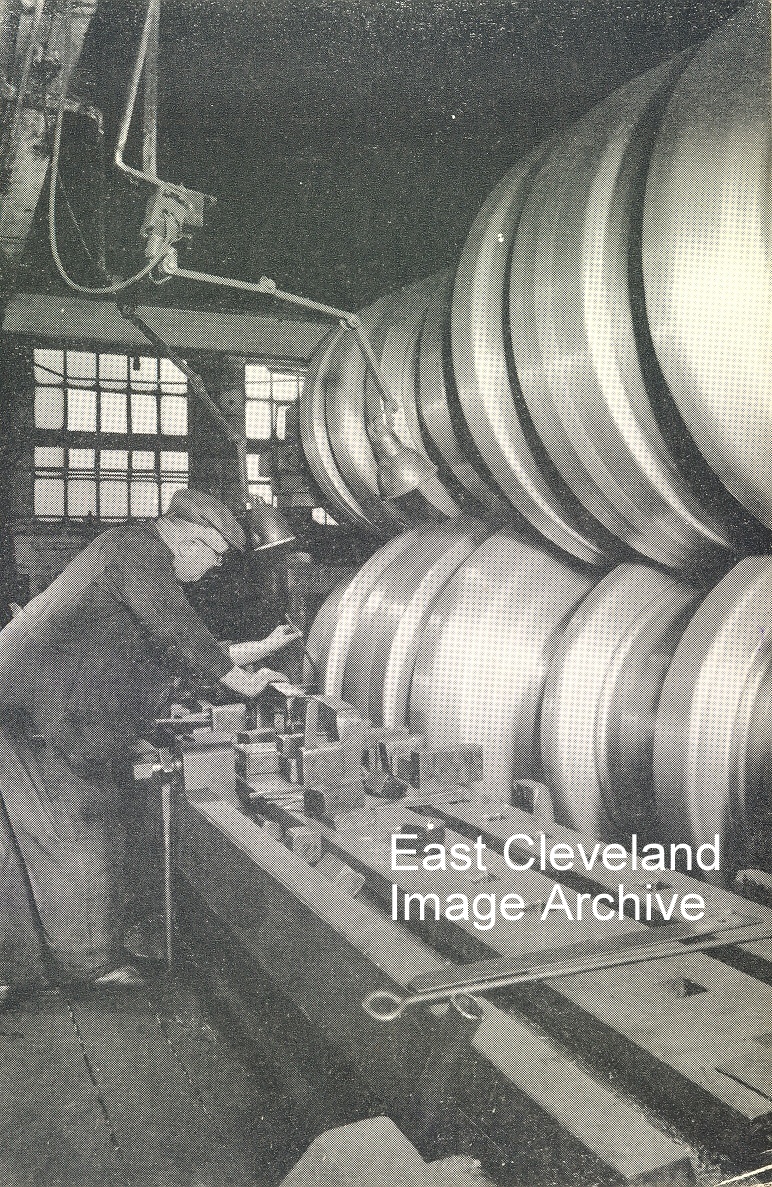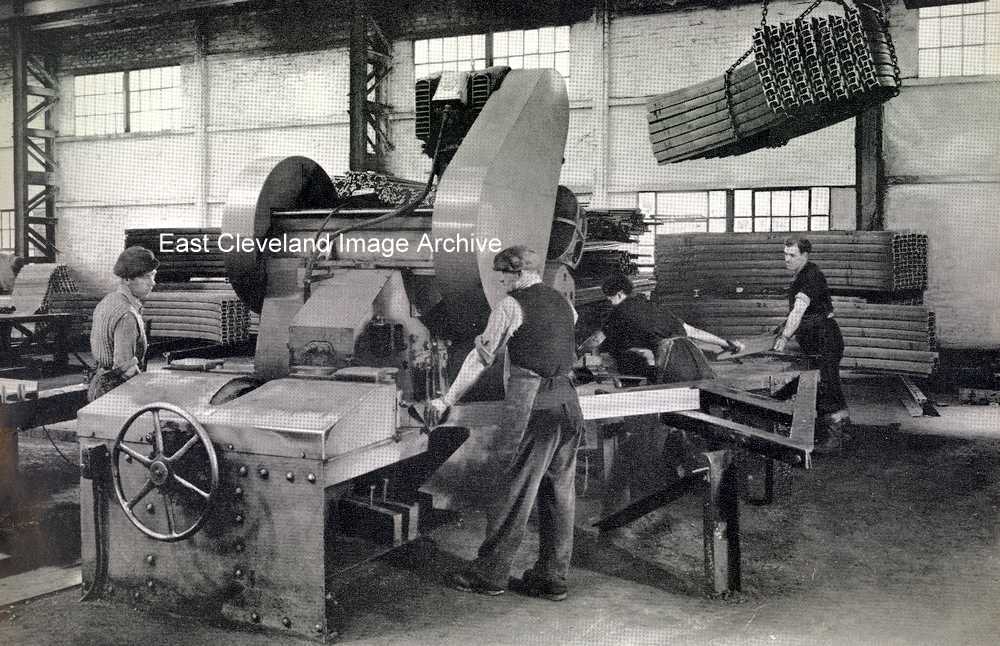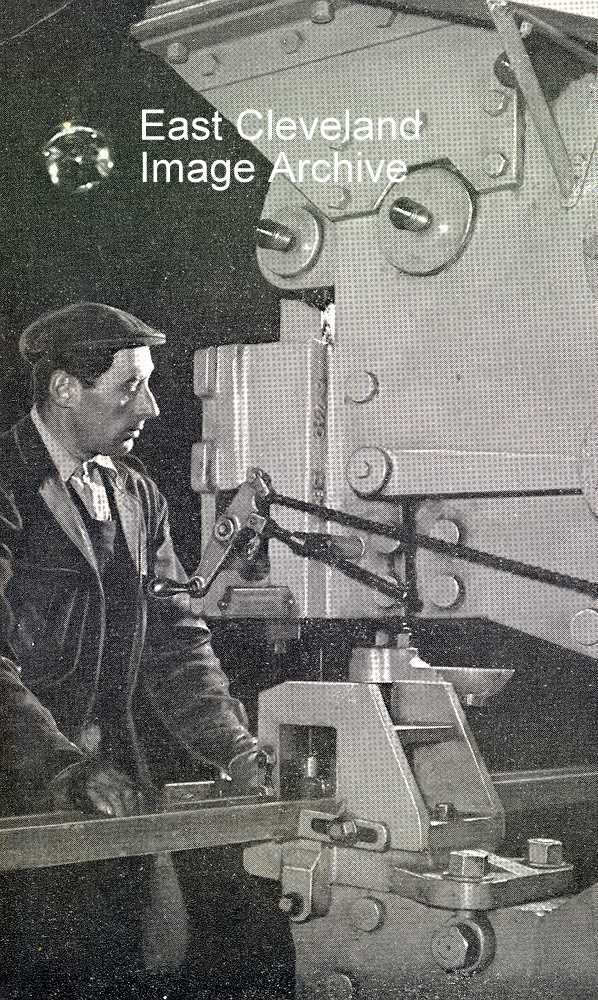|
|

Of the 300 ton steel furnace; Rodney Begg told us: “This is the view I used to get just out of the door of the Shift Laboratory on the Talbot’s; the ’A’ end of a furnace (in this case either ’B’ or ’C’). It is easy to see the difference between this image and the image of the gas-fired one in an earlier post. The burner end is mobile for maintenance and carries much more complex pipe work”.
Thanks to Rodney Begg for the update.

Taken from the top of No. 5 perhaps (maybe during its construction in the 1950’s?). A different view of the iron and steel works, looking inland, and down into the valley; the two rows of Furnace Cottages can be seen. Rodney Begg told us: ”I spent the last 12 years or so of my employment here as a metallurgist in the bottom Test House (just to the right of the water tower and partly hidden by the tall chimney, nearly in the centre of the picture)”.
Thanks to Rodney Begg for the update.

Skinningrove Rolling Mills evolved as completely self-sufficient units, capable of developing the rolls for new sections and manufacturing them from blanks. A number of highly skilled men were involved; from the draughtsmen drawing up the profiles, the pattern makers manufacturing the cut profiles for the roll turners to manufacture. Mike Hore told us: “The roll turner in the photograph is Harry Roberts. I worked with him on the same shift for a number of years before I left the Steel Industry. In addition the photograph was taken in the old roll shop which was situated under the mill arch and under the mill gantry crane. The picture was probably taken in the late 1960’s since the present roll shop came into operation in roughly 1971/72”. Ken Johnson also told us: “I trained as a teacher with Mike Hore. Mike was able to write “Skinningrove” in mirror writing as quickly and efficiently as writing in normal writing.. I wonder if Mike could still do that?”.
Thanks to Mike Hore and Ken Johnson for the updates.

The Archive was not sure which stand this was in the 18” Mill and wondered if someone could enlighten us? Raymond Stonehouse assisted with: “I believe this view is of the Intermediate and Finishing Stands, looking at them from the Saw side (North Sea)”.
Thanks to Raymond Stonehouse for that update.

The same applies here, it was almost a taboo place for the uninitiated, the steel used to hurtle around on the mill floor – very scary!

A view down the shop of the 18 inch mill before re-modelling in 1956.

As the mining industry modernised the coal mine in particular moved across to steel for its roof supports and Skinningrove was quick to capitalise on this; the 18” (or Little) Mill being ideally suited to producing small ’H’ beams (or ’I’ beams, if you prefer) and as the order book grew so did the Colliery Arch Department. They were all cold-formed on these rotary bending machines. Frank Bridge advises:”I worked on this very machine back in 1973-1974, a memory worth holding on to. The men I worked with were the hardest grafting and drinking crew you could wish to meet; a truly great bunch of lads”. Eddie Watson adds: “I worked in colliery arch plant B.S.C. Cleveland.from 1975-1986. I worked my way up from stick lad on cropping machine to cambering machine puncher. Very hard work but best times of my life”.
Thanks to Frank Bridge and Eddie Watson for the updates and memories.

How do you make perfectly finished squared ends to your steel products – with a cropping machine like this.
Image courtesy of the Pem Holliday Collection.

The rotary tippler at Skinningrove Iron and Steel Works. Rodney Begg told us: “When this plant was working my white collars would turn a paler shade of grey in no time!”.
Image courtesy of the Pem Holliday Collection and thanks to Rodney Begg for the update.

As Rodney Begg told the Archive: “This is the Skinningrove I knew and loved! In the foreground, under that water tower was the fuel laboratory (upstairs) and the day laboratory (downstairs). I spent my first twelve months on the ‘Grove’ as a junior chemist here”.
Image courtesy of the Pem Holliday Collection and thanks to Rodney Begg for the detail.
|
|










Recent Comments